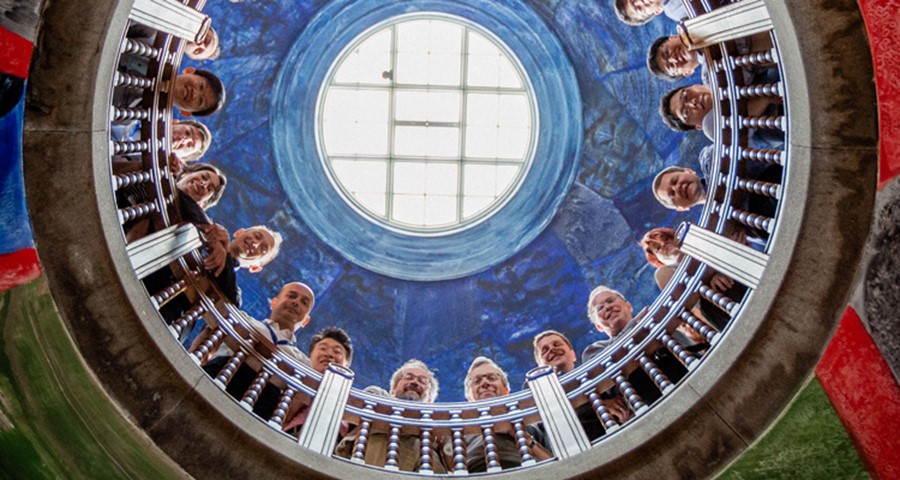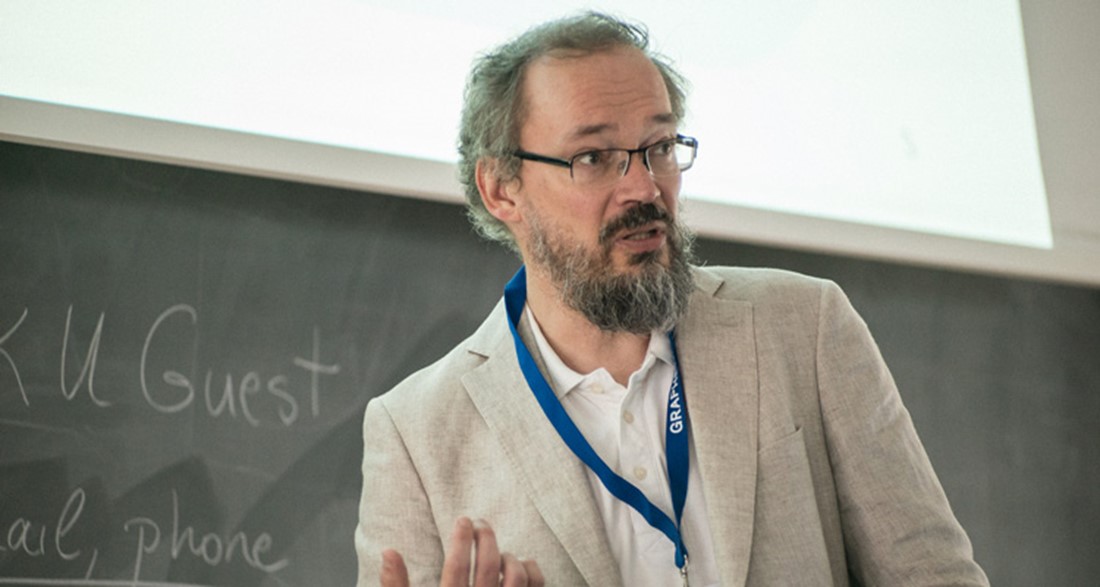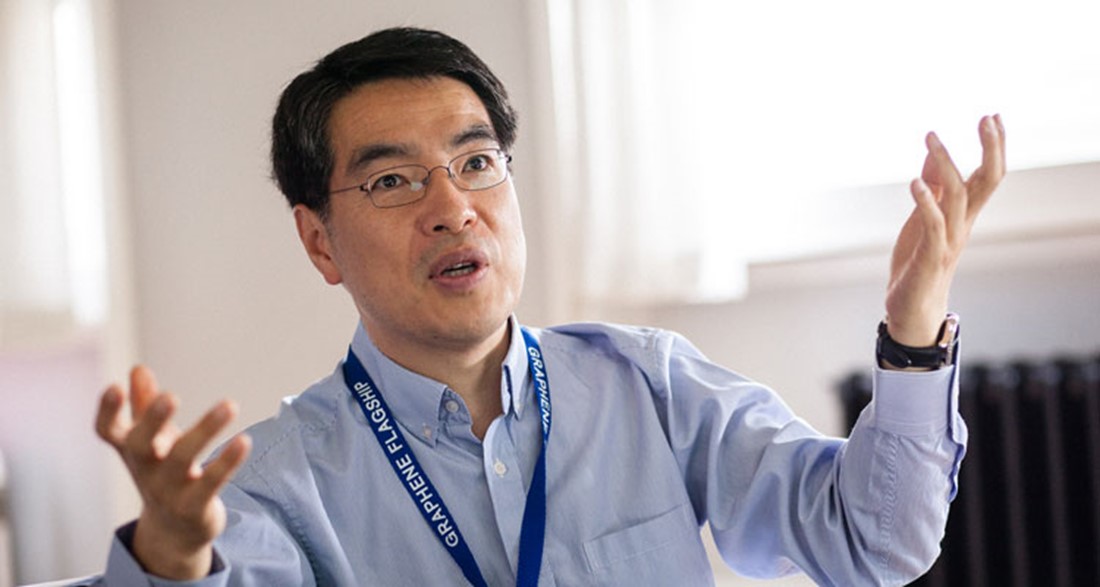EU–Korea Workshop Fosters Collaboration and Exchange
Researchers from the Graphene Flagship and the Korean Graphene Society came together in Copenhagen to exchange ideas and promote collaboration in research on graphene and other layered materials.

On 15 and 16 August 2016, researchers from the Graphene Flagship and the Korean Graphene Society came together to exchange ideas and promote collaboration in research on graphene and other layered materials. The jointly organised Graphene Flagship EU–Korea Workshop in Graphene and Related Materials was held at the University of Copenhagen Geological Museum, inside the Botanical Gardens in Copenhagen, Denmark. The event was the second meeting between graphene researchers in the EU and Korea, following on from last year’s meeting held in Busan, Korea, in August 2015.
International collaborations are an important part of the Graphene Flagship’s activities, as they ensure that the Graphene Flagship’s achievements are disseminated on an international scale. Researchers from the Graphene Flagship and the Korean Graphene Society presented work in a range of fields, particularly chemistry and synthesis for biomedical and electronics applications, with a spotlight on functionalised graphene materials. Professor Jari Kinaret (Chalmers University of Technology, Sweden), Director of the Graphene Flagship, says “The second EU–Korea workshop on graphene chemistry focused on how to optimize graphene and related materials for different uses. The lively discussions on topics ranging from production of high quality graphene to applications as composite materials or solar cells demonstrate the central role chemistry has in the Graphene Flagship and in related projects in Korea.”

Jari Kinaret, Director of the Graphene Flagship, welcomes participants to the Graphene Flagship EU–Korea Workshop in Graphene and Related Materials.
The meeting was opened by talks from workshop co-chairs Professor Kinaret, and Professor Hyeonsik Cheong (Sogang University, Korea), President of the Korean Graphene Society. Professor Kinaret described the aims and organisation of the Flagship and outlined the current research focus towards industrial applications. This was followed by a talk from Professor Cheong, who described the current status of graphene and related materials research in Korea, and explained the goals of the Korean Graphene Society. Discussing the Society, he says “The Korean Graphene Society is an informal group of people doing research on graphene and related materials. It was started in 2009 to promote exchange of information among many researchers doing similar research activities. The basic aim of the Society is to promote mutual collaboration and exchange of ideas among the researchers.” The Graphene Flagship and the Korean Graphene Society share the aims of promoting cooperation and communication between scientists involved in graphene research.
Professor Cheong also described the Korean Government’s Ministry of Trade, Industry and Energy support for graphene research in the form of Graphene Commercialisation Projects. These projects aim to develop a commercial product within 6 years, targeting touch screen panels, impermeable barrier films, EMI shielding, and organic LEDs. Graphene research in Korea is strongly focused on practical and commercial aspects, including device applications and synthesis.

Hyeonsik Cheong, President of the Korean Graphene Society, presents an overview of graphene and related materials research in Korea.
Promoting International Collaboration
A key objective of the meeting is to strengthen relationships and to promote international collaborations. By exchanging ideas in workshops such as this, researchers working in similar areas can keep abreast of advances in research and pool together to push the boundaries of the cutting edge. Dr Vincenzo Palermo (National Research Council of Italy, Italy), leader of Work Package 14 – Polymer Composites, added “I think that these meetings are a good way to know what researchers are doing on the other side of the world, to stay in touch and align on the state-of-the-art. The goal of the Flagship is not simply to confirm international collaborations that are already going on, but to help them to go in a strategic direction.”
During the opening presentation, Professor Kinaret was keen to highlight the opportunities that exist for enabling young researchers from the Graphene Flagship to participate in international collaborations and conduct research abroad. Funding is available from the Flagship in the form of Mobility Grants worth €5000 per project, and it is hoped that these grants will be the first steps towards collaborative projects. Professor Cheong agreed that this workshop has been useful for identifying available opportunities for collaborative work, commenting “I think the meetings this year and last year have been very useful in terms of European and Korean researchers getting to know each other. It will take some time to develop some concrete, collaborative projects, but I think we can start with some smaller things like student exchanges, and this joint workshop is a good first step.”
Discussing Goals and Challenges
An important outcome of the workshop was clear goals for focusing future research. To this end, discussion time was invaluable during the meeting, with interesting questions following each presentation. Additionally, time during the afternoon of the second day was devoted to an open discussion of questions that must be addressed in order to achieve commercialisation of graphene-related technologies. This discussion highlighted the challenges inherent in taking promising research to large industry, and provided an excellent forum to identify shared goals between EU and Korean researchers.
All attendees participated in this lively discussion session, which spanned topics from chemical functionalisation methodologies and selectivity in graphene, to carrier transport properties and electrical contact in transition metal dichalcogenide heterostructure devices. Of particular concern is the availability of large scale, high quality graphene, graphene oxide, and other layered materials. The possibilities for development of bottom-up growth techniques based on organic chemistry synthesis methods were discussed, particularly growth at liquid interfaces. The importance of clear characterisation of functionalised materials and having a good understanding of how chemical functionalisation of graphene changes the electrical properties was also noted.
Research Presented at the EU-Korea Workshop
The key focus of the research presented at the meeting was chemistry of graphene and graphene-related materials. Synthesis and functionalisation are cornerstones of technology development for a variety of applications. Professor Xinliang Feng (Technical University of Dresden, Germany), leader of Work Package 13 – Functional Forms and Coatings, discussed the production of functionalised graphene for energy applications, such as flexible printed supercapacitors. Electrochemical exfoliation in carefully chosen electrolytes could enable effective intercalation of target ions, while also stabilising the dispersion of graphene flakes in the ink. Professor Sang Ouk Kim (KAIST, Korea) presented controlled self-assembly of different chemically modified carbon materials – including nanotubes, graphene, and fullerenes – to form functionalised hierarchical structures, including graphene fibres from folded graphene sheets. By chemical modification, the structures can be modified for various applications, including catalysis, solar cells, and composites.
As well as introducing desired molecules for chemical functionalisation, it is also important to be able to prepare clean, high quality surfaces and interfaces without contamination. Professor Peter Bøggild (Technical University of Denmark, Denmark), partner of Work Packages 6 – Sensors and Work Package 7 – Electronic Devices, delivered an interesting talk on a new technique for fabrication of heterostructures with clean interfaces. Using temperature-controlled adhesion, graphene can be transferred onto patterned layers in large batches, with temperature cycling removing contaminants from the interfaces.
Dr Hyeongjin Shin (Samsung Advanced Institute of Technology, Korea) gave an overview of the history and future of graphene research at Samsung. She explained that layered materials research at Samsung is directed towards integrating graphene with silicon electronics, focusing on engineering electronic components, including optoelectronics devices and tuneable Schottky diodes, such as the graphene barristor. Speaking about the exiting opportunities afforded by the tuneable graphene barristor, Professor Hyun-Jong Chung (Konkuk University, Korea) said “There is a bright future for graphene barristors, but whether they are accepted by industry is determined by silicon, rather than graphene. In the meantime, we should work on lower voltage operation and lower energy consumption for faster switching.” Professor Chung envisaged graphene electronics becoming a part of daily life, without needing to open up a semiconductor bandgap.
Industry within the Graphene Flagship was represented by Dr Kenneth Teo (Aixtron, UK), leader of Work Package 15 – Production, and Dr Julio Gomez (Avanzare Innovation Technologies, Spain), partner of Work Package 14 – Polymer Composites and Work Package 15 – Production. Dr Gomez described the work in bulk graphene production for energy and composite applications currently underway at Avanzare. Dr Teo provided an overview of the Graphene Flagship’s activities towards industrial production of graphene on wafers and via roll-to-roll processing, and using these methods to produce prototype devices. He said “We want to validate the components in a relevant environment, and prove that the devices will actually work in a real-life environment. This will really demonstrate how graphene can be integrated into a value chain that exists today.” Aixtron’s work developing a prototype aeroplane part for the Airbus A350 including graphene related materials provides an excellent example. The part – the leading edge of the horizontal tail – will be made of graphene-containing polymer and carbon fibre composites, with the graphene providing impact resistance and conductivity in the case of lightning strikes.
Outlook for the EU-Korea Workshop
This successful workshop stimulated in-depth discussions about problems at the cutting edge of graphene research. These debates have provided opportunities for close collaboration between partners in the Graphene Flagship and Korean Graphene Society. Professor Kinaret is enthusiastic about the future of cooperation between the EU and Korea: “I am looking forward to further strengthening the ties between our two communities in the coming years, catalysed by the newly announced mobility grant scheme and other funding opportunities.”
The Graphene Flagship EU-Korea Workshop will be held for a third time in 2017. The next workshop will be held in Korea, continuing the trend of alternating host locations as part of the partnership.
I am looking forward to further strengthening the ties between our two communities in the coming years, catalysed by the newly announced mobility grant scheme and other funding opportunities.”
Flagship Director



